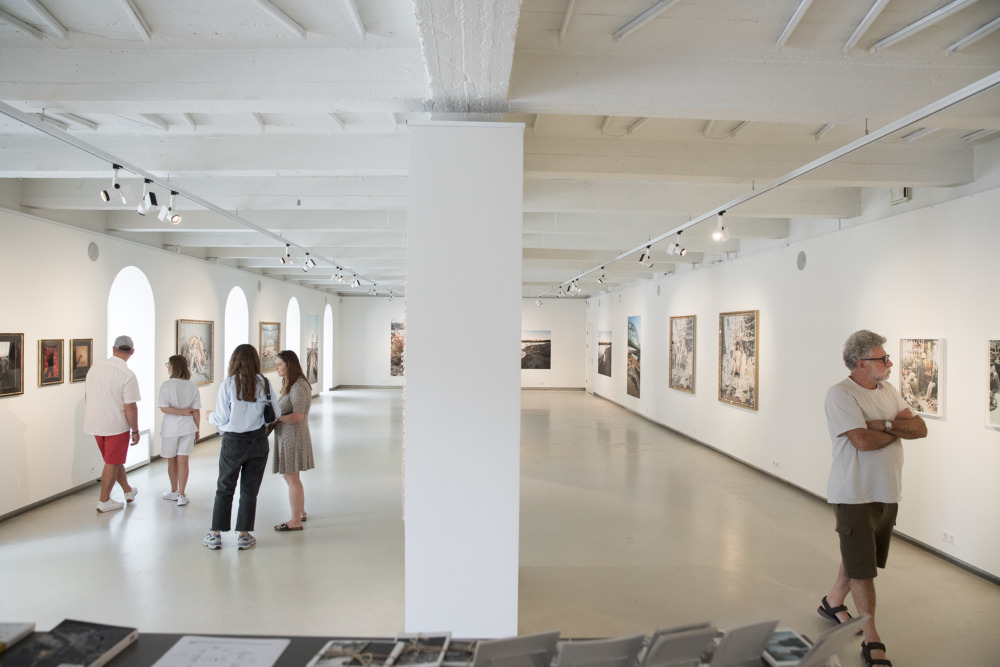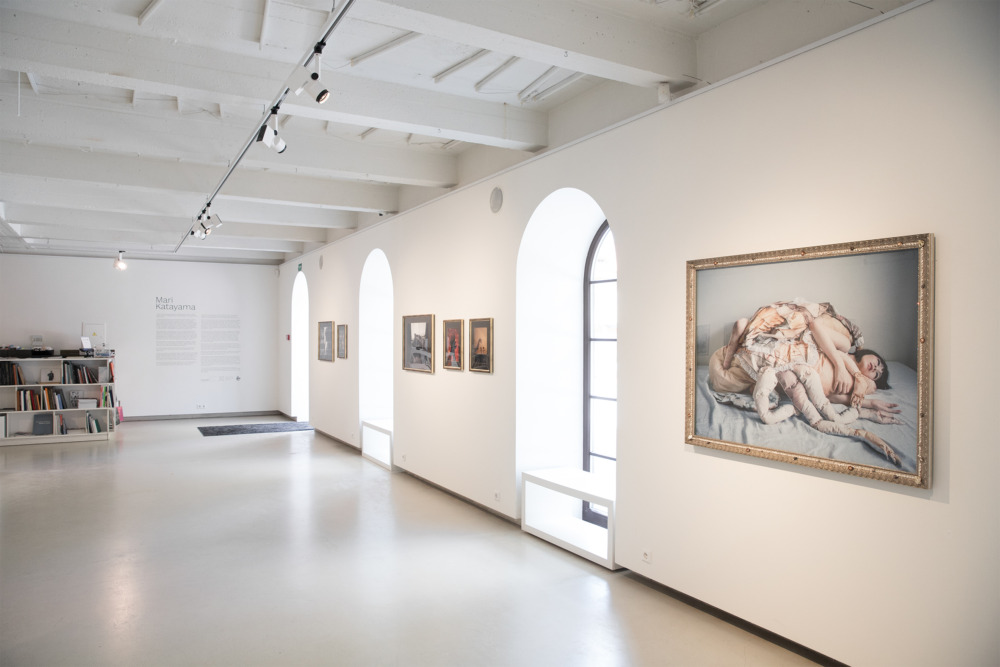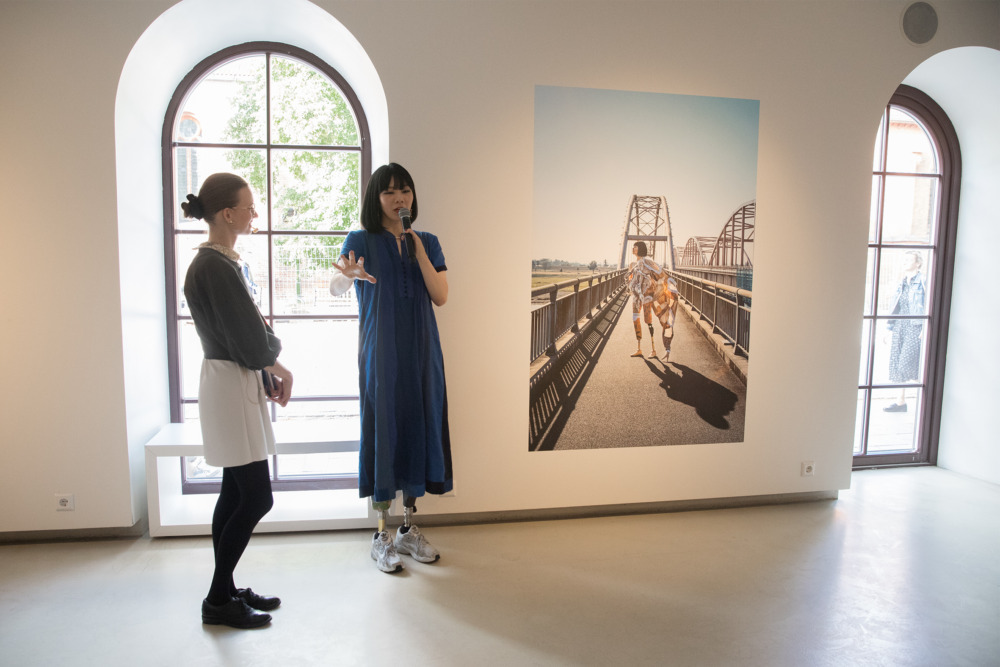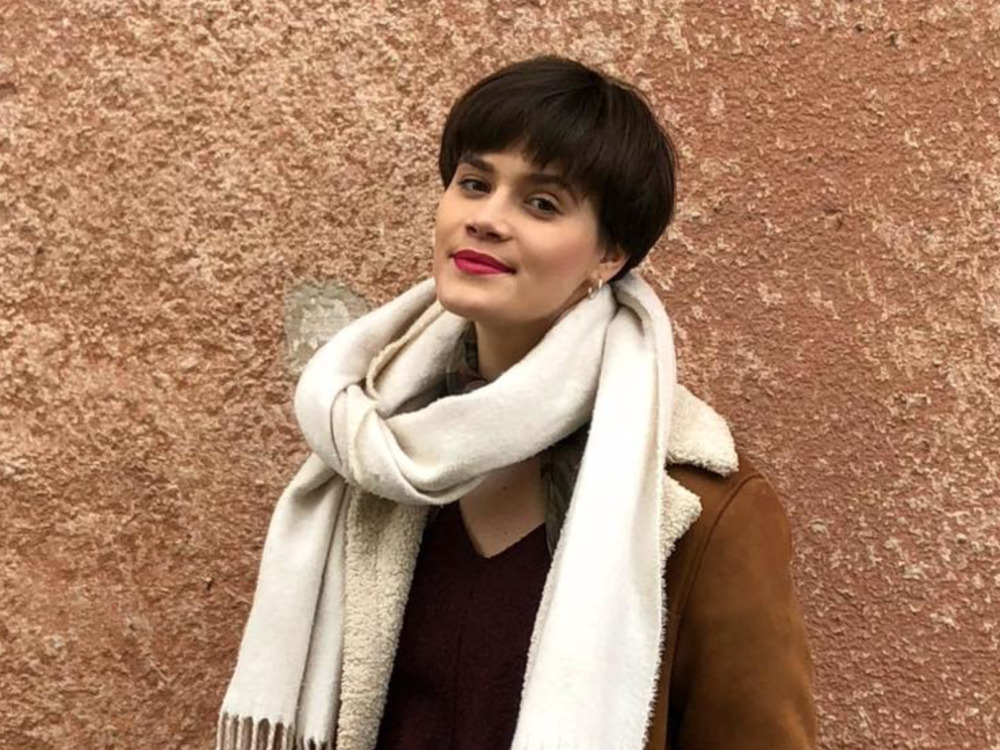Column
ColumnDefinitions of Corporeality: Mari Katayama’s exhibition at Kaunas Photography Gallery
In the midst of 2022 the dazzling, dreamlike body of work by Japanese photographer Mari Katayama filled Kaunas Photography Gallery space turning it into a captivating space for discoveries. It was more than the exhibition. As everything Mari does, it was a subtle and compelling manifestation of beauty and perfection on her own terms. It was a powerful personal statement. However, first and foremost it was a say-hi.
The exhibition, entitled ‘Mari Katayama’, was the first solo exhibition in Lithuania by the internationally acclaimed artist. The exhibition featured Mari’s photography series produced between 2015-2021 thus allowing the spectator to have a retrospective look at the artist’s work.

Mari’s artistic practice is shaped by her physical appearance and bodily experiences. Suffering from congenital tibial hemimelia, Mari had both legs amputated at the age of nine. Since then, using her own body as a living sculpture, she has created numerous self-portraits, often wearing uniquely decorated prosthetic legs and hand-sewn embroidered objects. In her meticulously staged self-portraits (which she always shoots herself, using a remote control or self-timer) the artist explores issues of identity, beauty, feminity and vulnerability, while questioning the perception of disability and the representation of the female body. Mari’s body of work bends the line between the familiar and the strange, the natural and the artificial. It is full of both personal stories and universal art history references. All of which make her work so unique and relatable.
The exhibition was richly inventive and liberating redefinition of ‘body’ itself. It goes without saying that the exhibition touched the audience tremendously. The visitors of the exhibition were extremely eager to share their thoughts and observations on Mari’s body of work with the gallery staff (and that, dear reader, doesn’t happen all too often). It was obvious that Mari’s work resonates with the audience, giving it something to think about and most importantly something to take away.
Mari came to Kaunas Photography Gallery to install the exhibition herself. She carefully selected the perfect spot for each artwork. Her main concern was to find the perfect ‘balance’ and ‘rhythm’ in the exhibition. That’s where her dialogue with the audience began. She created a particular way of reading her own artworks, suggesting a storyline, a guiding narrative that makes one’s experience in the gallery space a mesmerizing journey.
While installing the exhibition, Mari was so fascinated by the natural light in the gallery space, that quite naturally she felt inclined to experiment with it and decided to take some photographs in one of the gallery windows. One of the pictures taken was included in the exhibition the very last minute, giving it a final touch.

To complete the visitors experience, during the exhibition opening, Mari Katayama gave an artist talk and a tour of an exhibition. The event was held in Japanese with translation to Lithuanian. It was streamed on the Kaunas Photography Gallery Facebook page where it was seen by over 400 people and continues to be available online to date. The opening event was a crucial element to the whole exhibition experience. It allowed the audience to meet the artist and see the person behind the artworks. It was equally important for Mari since she believes that through her art she can be connected with the world and wider society.
When we first started the project all we wanted was to introduce Lithuanian audience to yet undiscovered Japanese photographer Mari Katayama and encourage a wider recognition of authentic photographic forms used in contemporary humanist photography. Little did we know, that exhibition will exceed all our expectations. In the exhibition, Mari insightfully addressed the issues of invisibility of disabled people, positive/negative body image and archetypical feminity, thus raising people’s awareness towards these matters and reducing stigmas that surround them. It was a pleasure seeing how the exhibition and its topics echoes in the visitors.
The exhibition also inspired the infrastructural changes in the gallery. In order to make the exhibition more accessible to Mari and the gallery visitors with mobility impairments, we installed a temporary ramp at the gallery entrance, which was later turned into the permanent ramp. We hope to continue working on the gallery’s accessibility in order to make our physical gallery space more inclusive for all.
The making of Mari Katayama’s exhibition was a long and exciting journey full of professional and personal discoveries. More than one year of preparation led us to the prosperous and valuable collaboration with Mari and Mari Katayama Studio, which doesn’t end here as we already have some plans for new joint ventures.

During Mari’s exhibition, a few Japanese publications that contained Mari’s body of work were available for the visitors to read on spot in order to get a better understanding on Mari’s art practice. We noticed that the Lithuanian audience is fairly interested in Japanese art books. It inspired us to think of a possible Japanese art books exhibition that would allow the Lithuanian audience to continue the acquaintance with contemporary Japanese photography and discover the art of Japanese book making. We couldn’t think of anyone more suitable for the selection of the books to be showcased than Mari Katayama herself, who kindly agreed to take up the role of the curator this time. The exhibition shall contain up to 20 Japanese authors, including Mari, and shall consist of 20-40 publications. With a little bit of luck, we hope to put the exhibition together in 2023.








